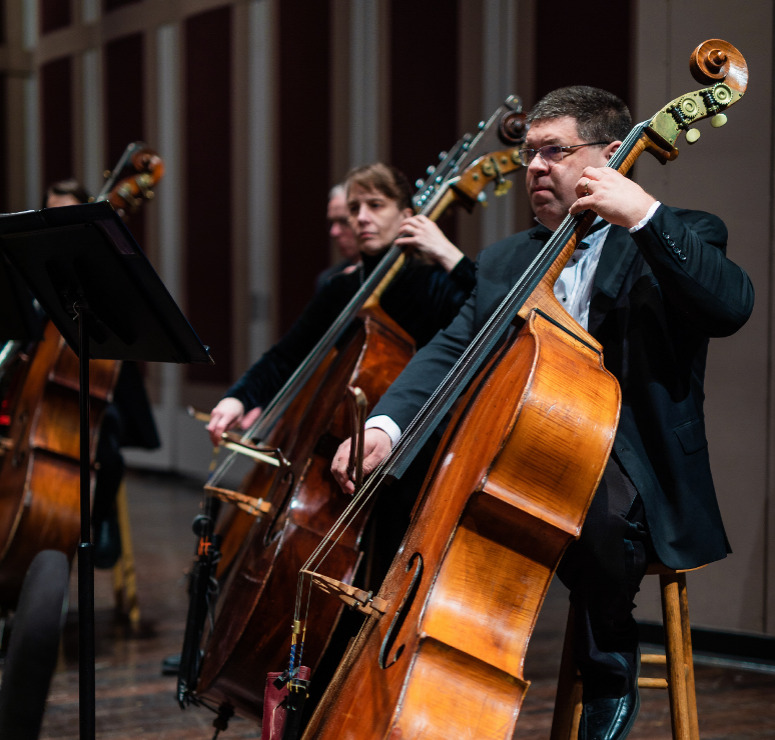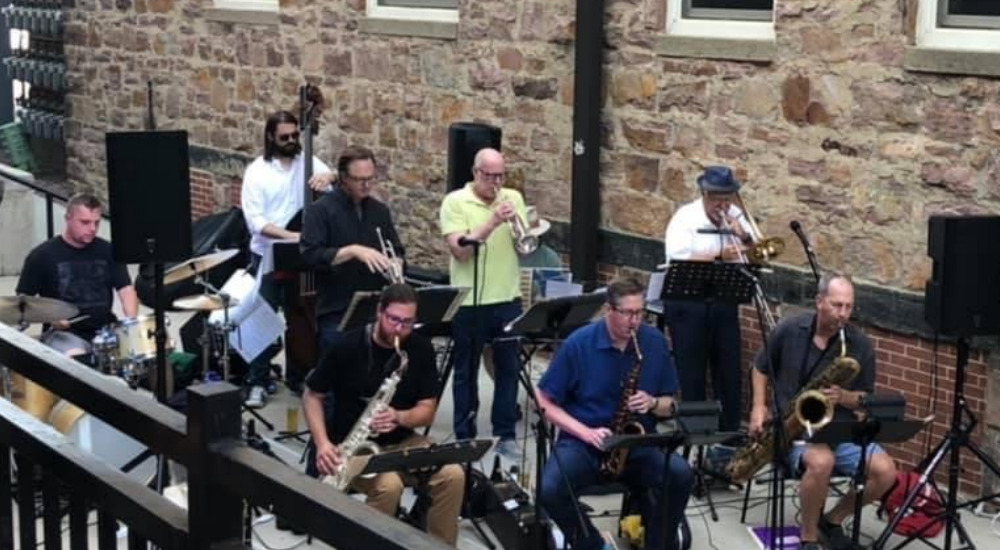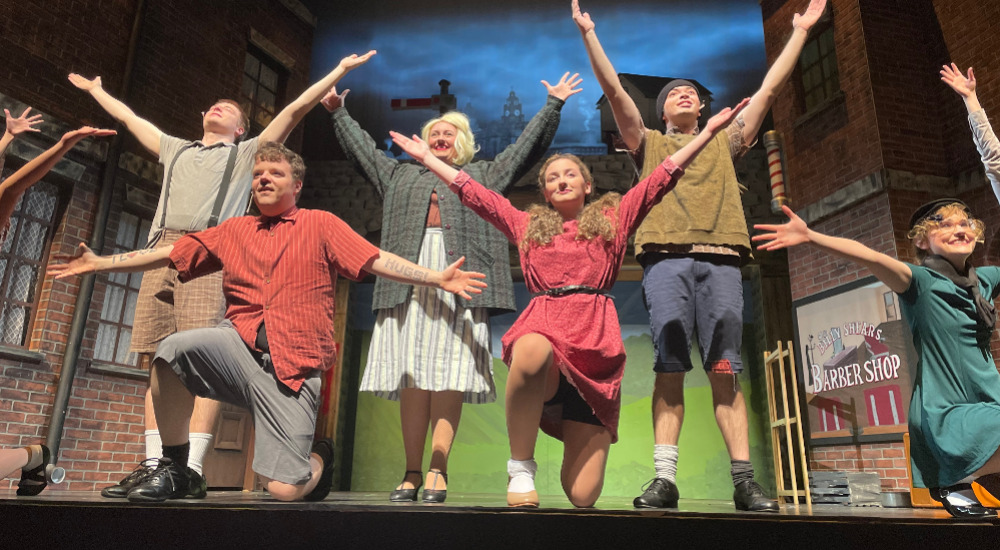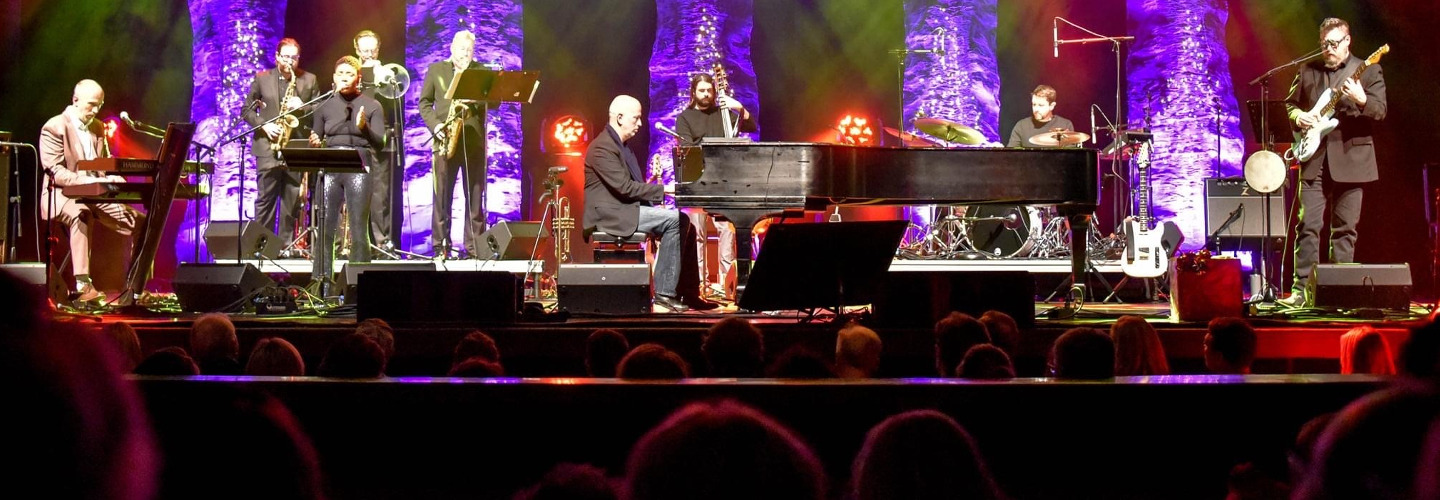
The impact of the arts
enhance community and economy
Imagine, for a moment, a walk down Phillips Avenue.
Along the way, you might see various SculptureWalk sculptures or glimpse the Arc of Dreams. Or maybe what stands out is the artwork on the utility boxes or painted on storm drains. And the odds are pretty good you’ll pass a banner advertising a local theater show or music performance.
Imagine that walk, again, but this time, take out all of the arts. There’d be no sculptures, no colorful murals, no shows advertised, not even the popular Sioux Falls flag.
Does it still feel like a walk in Sioux Falls?
“When you think about what will be remembered from Sioux Falls, South Dakota a millennium from now, it’s probably going to be something related to the arts,” Executive Director of Arts South Dakota Jim Speirs said.
The arts play a critical role in the culture and quality of life in the Sioux Falls community, and they also have a substantial impact on the local economy and business community.
What we mean by ‘the arts’
Often when people talk about “the arts,” the mind jumps directly to fine arts like ballet or the symphony, and, while those are integral parts of the arts scene, local artists say there’s so much more to it than that.
“Even if you don’t feel like it, you’re a part of the arts scene,” said Kellen Boice, executive director for the Sioux Falls Arts Council.
Boice said anyone who’s ever attended a concert at the Levitt, seen art on the walls at a local coffee shop or listened to a band play at a local bar is participating in the local arts scene.
Speirs takes the definition of the arts even further to include literary arts, filmography, videography, weaving, saddle-making and basically anything creative. That includes the art of brewing beer and culinary arts, which Sioux Falls has in spades across the city.
“Those are also part of our creative industries and what really makes Sioux Falls special,” he said.
A closer look at Sioux Falls’ vibrant arts community
One of the most obvious ways to look at Sioux Falls’ arts community is the prevalence of visual arts.
Sioux Falls has more than a dozen galleries in town – including both traditional galleries like the Washington Pavilion and galleries in nontraditional spaces like JLG Architects or Coffea.
The performing arts are also very visible throughout town. Restaurant and bar owners often look to local bands and musicians to perform in their spaces as a draw for customers.
Performing arts include the various theater groups in town like the Premiere Playhouse. Several other local groups have formed in recent years, and the theater scene is finding more creative ways to use spaces that hadn’t historically been used for theater, Boice said.
“This is the kind of community where you can really set your own tone,” she said, adding that often when there’s a gap in the arts scene, individual artists will step up and find entrepreneurial and creative ways to fill that gap.
Sioux Falls also has a strong support of sculptures, largely brought on by the prevalence and popularity of the long-running SculptureWalk, said local sculptor Darwin Wolf.
Wolf studied art and sculpting in college, but he initially moved to Sioux Falls for a job not related to the arts. In 2003, he began sculpting again and developed an emphasis in sculpting notable South Dakotans.
He worked for years sculpting and promoting a project dedicated to Richard F. Pettigrew, the first U.S. Senator representing South Dakota after it became its own state. Wolf was working to not only sculpt the project but also to raise the funds to make it possible.
“It was a rough go trying to get all that done,” he said.
Then, the Greater Sioux Falls Chamber of Commerce stepped in. They helped him get the fundraising over the finish line. It was that partnership with the chamber and the business community that made it all possible, Wolf said, adding that he’s “forever grateful.”
Wolf said artists in Sioux Falls are a “manufacturing power.” Not only are they creating visual, performance, written, textile, edible arts, but they are also living, working and spending money in the Sioux Falls community.
“We’re here,” he said. “We want to continue to be part of the local economy.”
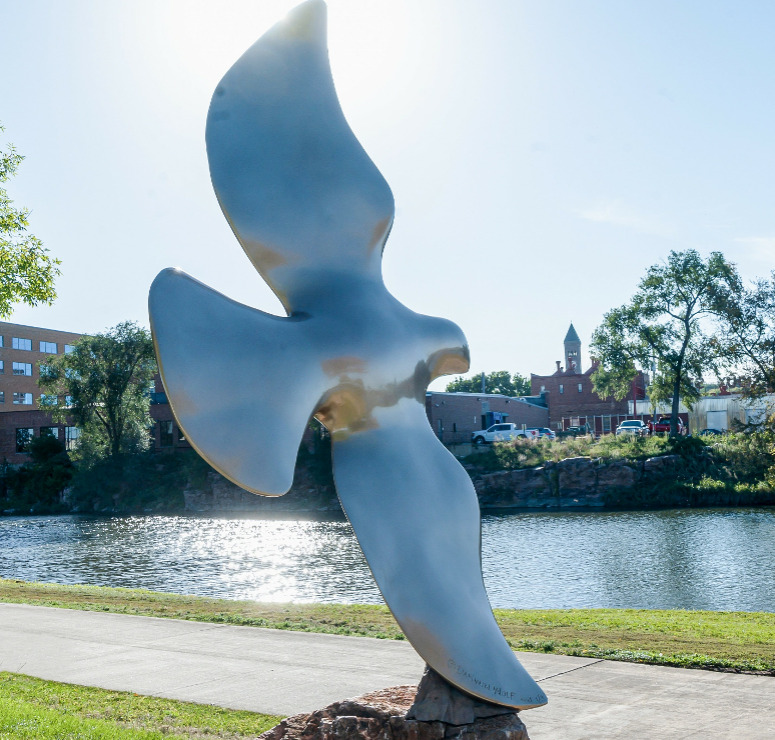
Arts as an economic engine
There’s no question the arts contribute to Sioux Falls’ culture and quality of life. But a perhaps lesser-known aspect of the arts scene is its economic impact.
A 2015 study administered by Americans for the Arts showed that nonprofit arts organizations in the Sioux Falls area generated more than $105 million in annual economic activity.
The study also showed the arts accounted for more than 3,500 full-time jobs in the area, and that the average audience member at a given arts event spends $30 when they attend that event.
“So every time somebody buys a ticket to see a Premiere Playhouse production, and we get an audience of 500 people, that’s $16,000 coming downtown that evening,” said Robin Byrne, executive director for the Premiere Playhouse.
That study is being conducted again this year, and leaders in the local arts community expect to see even greater numbers in 2022 in terms of economic impact. It’s also worth noting the study does not take into account artists who are not part of registered nonprofits or other companies involved in the arts that don’t have a nonprofit tax structure.
“The arts aren’t just a bunch of pretty little things,” Wolf said. “The arts make up 4% of the gross national product.”
Wolf also noted the significant role art has played over the years in reinvigorating Sioux Falls’ downtown.
The Washington Pavilion was a significant part of that, he said, but other things like SculptureWalk and, more recently, Levitt at the Falls, the community theater, the musicians playing in bars and restaurants have all contributed to “resurrecting” downtown.
“There isn’t much that the arts can’t do,” Wolf said.
How art and business fit together
Beyond the dollar signs, the Sioux Falls arts scene also plays a role for local businesses in attracting and retaining the people who live and work here.
Take the South Dakota Symphony Orchestra, for example. Executive Director Jennifer Teisinger said she hears often from board members or patrons that the symphony’s location in Sioux Falls was one of the deciding factors in their choice to move here. And for Teisinger, it’s not a question of what Sioux Falls is like because the orchestra is here.
“The real question is how would you feel if the symphony orchestra wasn’t here?” she said. “It’s a little bit like parks – you may not go to the park all the time, but you would really miss it if it wasn’t there. It becomes a part of what makes this community vibrant.”
People will make decisions about where they’re going to live and who they’re going to work for based on what facilities that city has to offer them.
Teisinger has also seen employers in town take prospective hires to the symphony as a way to entice them to take a job in Sioux Falls knowing that the community has this strong element of music and culture to offer them. “That might tip the scales,” she said, “and we know that it has.”
As Sioux Falls grows into a larger city, the arts are an important aspect in attracting that growth, Byrne said, calling it a “resource we can offer.”
“When you look at real thriving, popular cities that are expanding, that are attracting businesses – every single one of them has a thriving arts district,” he said. “People will make decisions about where they’re going to live and who they’re going to work for based on what facilities that city has to offer them.”
Supporting the arts can also be a way for businesses to show potential customers their values and their commitment to the community, Byrne added.
“By being, consistently, a company that supports the arts, you seep into the unconsciousness of the community as one of the good guys out there that’s trying to invest in the community rather than just simply profiting from the community,” he said.
Having a strong arts community has also been beneficial to Sioux Falls’ healthcare community. Wolf said he’s been working with Sanford’s cancer center for 12 years now, sculpting with cancer patients.
“They’re not going to spend money on that unless they know it’s going to be beneficial for their patients,” he said, adding that the arts can also play an important role in treating mental health, addictions, physical therapy and more.
What the arts community needs from businesses
There’s not an arts organization in town that will tell businesses they don’t need financial support. In many cases, they’re getting that.
“Our business community takes its support of the arts very seriously, and they get it,” Teisinger said.
She added that the ticket price at the symphony orchestra covers about 25 percent of the cost to actually put on the production. The rest of that support comes from donors, including donations from local businesses via direct donations, advertising, sponsorships, buying season passes and more.
That said, the arts community’s needs go beyond the money. In some cases, what’s needed is space for rehearsals, performances, creators, etc, and Byrne said the real need is for space that is affordable – or even free – to use.
In other cases, what’s needed is flexibility. It’s very challenging to make a full-time living as an artist in Sioux Falls, Speirs said, and few people are able to do it successfully. That means most artists in town are working other jobs to pay the bills and creating art on the side.
“I think we need more businesses that say, ‘Hey, come work for us, and we’ll still make time for you to be an artist,’” Speirs said.
And, at the end of the day, what local artists said they need most is support.
The arts that come to Sioux Falls via broadway productions or out-of-state sculptures or musicians certainly add to the community, but Byrne, Speirs and Boice agreed one of the groups that could use more support is the smaller-scale local artists.
“What’s missing is the local-level support of our local, individual artists,” Boice said.
The Sioux Falls Arts Council is working to help those small artists by offering micro grants of $250 to $500 to help fund projects, materials, studio space, etc, but Boice said she’d like to see more support from the broader community.
Speirs said he’d like to see the city take a more strategic role in supporting local arts, too, adding that the business community can play a role in creating spaces for artist housing, studio space or collective work environments for artists.
“If we want to have an inviting place for people to live, and people to move and people to start businesses in, we have to have a vibrant art sector,” he said. “Or people won’t want to be here.”
